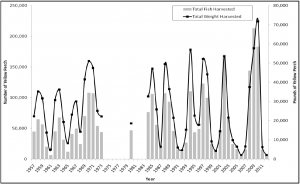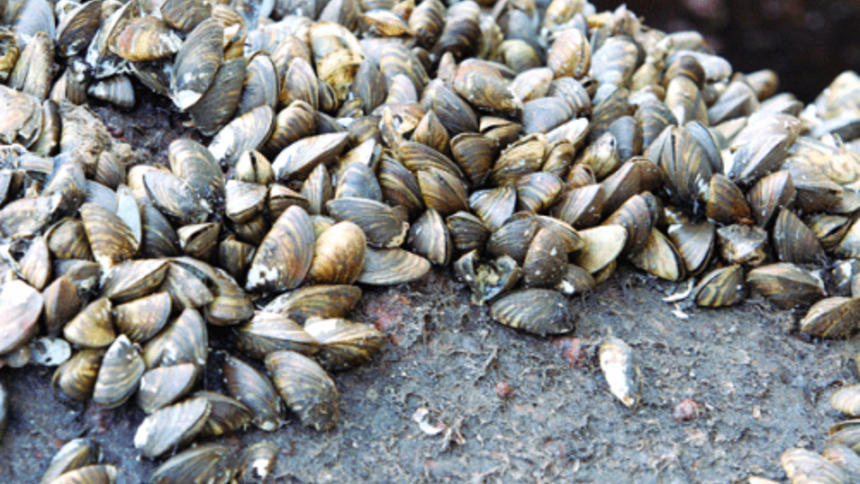By Steve Weisman
There is no doubt that Big Spirit Lake is one of the most traveled to and fished lakes in the Hawkeye state. Anglers target a variety of species: walleye, largemouth bass, smallmouth bass, northern pike, musky, bullhead, crappie, bluegill and yellow perch.
Ever since we moved to the Iowa Great Lakes in the late 1970s, I’ve spent a lot of hours fishing Big Spirit. Each year is different; each year the bite changes.
However, I would warrant that none are more cyclical than the yellow perch. For those who chase the schools of perch, you know what I mean. It seems that there are more peaks and valleys than a hilly road!
Although I can remember many of the perch bites, the nearly 40 years do kind of melt together. The biologists at the Spirit Lake Hatchery keep annual angler creel statistics, which better tell what happens on a yearly basis. Boom years have been 1985, 1988, 1989, 1994, 1997, 1998, 2002, 2008, 2009, and 2010. We’ve been in a decline since 2010 and there is no large year class coming through the system yet.
According to DNR regional fisheries biologist Mike Hawkins, this is typical of yellow perch. The up and down cycle is “predictable with what we’ve seen ever since angler harvest has been tracked in the 1950s,” says Hawkins. Each year when the DNR checks the lake for young-of-the-year fish, they will find lots of first year perch.
However, that does not mean that this is the next big year class. Part of the reason has to do with the dynamics of the perch population itself. First, they are the main forage for most predator fish in Big Spirit. Plus, they are cannibalistic predators of themselves. So, everything, including the big perch, makes a meal of those tiny perch. It is only when the oldest perch in the population comes to the end of their life cycle that a batch of young fish class has the chance to become the next big perch year class.
“A perch has a maximum life span of 5-6 years,” notes Hawkins. “We tend to see strong perch year classes every three to six years. It is interesting to note that if a year class is too large, then their growth slows and they take longer to reach the angler catchable size. The bigger the year class, the less resources there are for each fish. “ Bottom line, a moderately sized year class tends to provide both good catch rates and more quality sized fish.
Of course, every once in a while it seems everything aligns perfectly and you have back to back-to-back good fishing years. Take a look back at 1988-89, 1997-98 for example. And then there is the most recent one that lasted three years. Anglers’ memories can often times be short, so we all remember those years: 2008, 2009 and 2010. The great perch fishing lasted three years with the 8-9 inch fish kicking off the 2008 year, followed by two unbelievable years of huge numbers and great sized perch being taken. It didn’t seem to matter where; anglers caught fish all over the lake. Anglers came from several states just to ice fish Big Spirit in 2009 and 2010. During the fall, boats bunched together in huge towns catching fish.
Then came 2011, and the numbers plummeted. Yes, some were caught, but this unusually long boom of the cycle was coming to an end. Fast forward to October 2013, and perch fishermen are still waiting. Did we take too many? Could we have stock piled them? The answer is basically no.
“Anglers typically give themselves too much credit for causing harm to a panfish fishery. It is highly unlikely anglers can impact the yellow perch population negatively on a lake the size of Big Spirit. Since the lifespan of perch is so short and their natural mortality rates are so high, if an angler doesn’t utilize them, they will die soon after. This was evident in late summer of 2012, when we saw fairly large numbers of old perch die off,” says Hawkins. “Predators and longer lived fish like bass, walleye and northern pike are not the same. These fish are longer-lived and more susceptible to over harvest. Regulations that protect these fish from different types of overfishing are more common.”
So, yes, the bottom has dropped out of the big perch population. The cycle will swing upward. It’s all up to the dynamics of the entire fishery as to when that will happen. Typically, it’s every 3-6 years. Ongoing data supports this. Hawkins sees this occurring, hopefully for anglers sooner than later.
On a bright note, Hawkins says anglers might want to shift their sight toward East and West Okoboji. “When we pulled our nets this year, both lakes had tremendous numbers of one year old perch in them. Next year should be the beginning to some good years for perch fishing on both East and West.”












